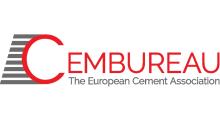
The strategy, published on October 14, sets out the EC's aim to at least double building renovation rates in the next ten years and make sure renovations lead to higher energy and resource efficiency. The Commission said this will enhance the quality of life for people living in and using the buildings, reduce Europe's greenhouse gas emissions, foster digitalisation and improve the reuse and recycling of materials. The EC adds that 35 million buildings could be renovated and up to 160,000 additional green jobs created in the construction sector by 2030.
“The renovation wave provides the EU with a unique opportunity to make a difference in citizens’ lives, and the cement industry is fully ready to play its role,” said Koen Coppenholle, CEO of CEMBUREAU.
CEMBUREAU says that concrete, which is the cement industry’s end product, offers key advantages for deep renovation in terms of energy savings, thermal mass, flexibility, insulation, resilience and recarbonation.
“By focusing on life-cycle approaches, circularity and ambitious building energy targets, the European Commission offers a convincing view of a decarbonised building stock,” said Coppenholle. “Concrete, which was at the heart of the Bauhaus movement, is critical for European buildings and everyday infrastructure such as schools and hospitals. Thanks to its capacity to absorb CO2 during its lifetime and end-of-life, its recyclability and its thermal mass properties, it plays a decisive role in decarbonising European buildings.
“We now look forward to ambitious policy proposals based on the principle of material neutrality and full life-cycle approaches."
Coppenholle cautioned that in this respect, the preference expressed by policymakers for one category of construction materials – nature-based solutions - over others without any scientific substantiation, is "disconcerting and worrying".
He added that concrete, as a fully local product, can absolutely compete with nature-based materials when considering life-cycle emissions and the full value chain impacts such as sourcing or transportation.
In its position paper on the renovation wave, CEMBUREAU has set out its support for an approach in which building renovation is not limited to energy efficiency. The association says it should include a focus on material efficiency, the circular economy and resilience. It adds that, throughout the regulatory framework, attention for a cross-material life cycle assessment at the level of the building should be one of the key policy drivers.
CEMBUREAU has published its own carbon neutrality roadmap, which looks at achieving net zero emissions along the cement and concrete value chain. Among other issues, the roadmap looks at how carbon emissions savings can be made through a better use of concrete, and highlights the decisive role it can play as a sustainable construction material. CEMBUREAU also supports the EC's new building assessment framework, Level(s), and has contributed to its pilot tests.










